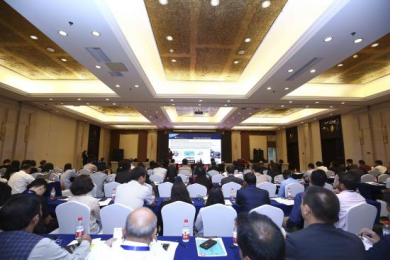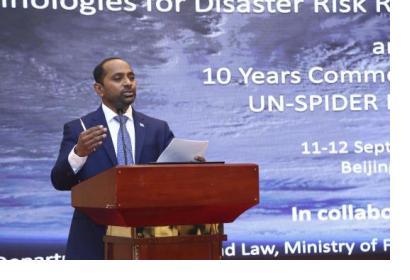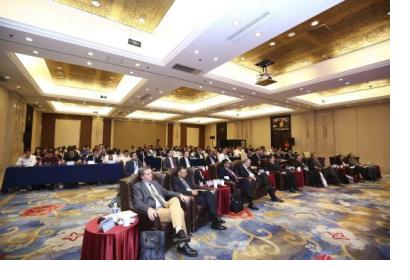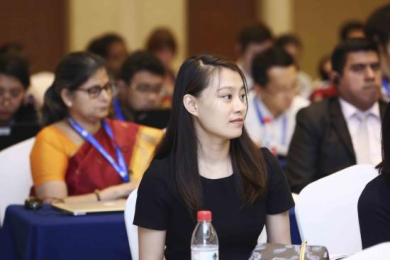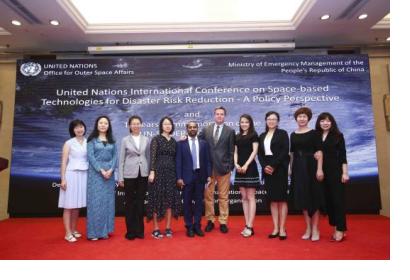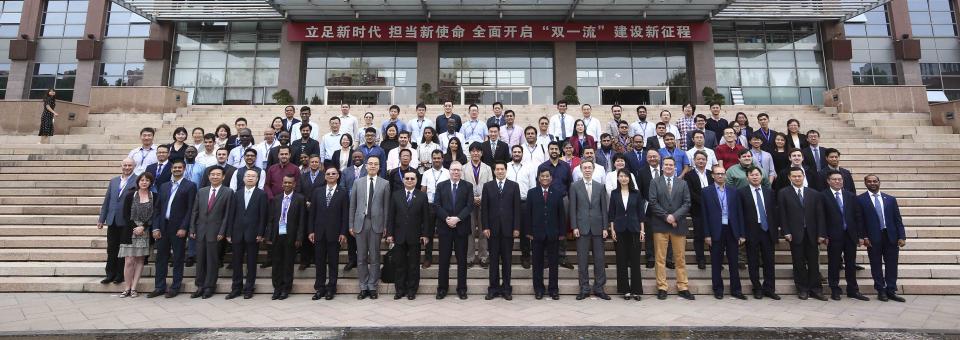The Sendai Framework for Disaster Risk Reduction 2015-2030 recognizes the importance of a multi-hazard approach to disaster risk reduction and makes explicit reference to promoting real-time access to reliable data making use of space and in situ information under Priority for Action 1, “Understanding disaster risk”. Such access is key to developing an understanding of disaster risk in all its dimensions including exposure of persons and assets, hazard characteristics and the environment. This knowledge can be leveraged for risk assessments, and improved planning and preparedness.
The use of space-based technologies and Earth observation, especially because of their contribution to understanding risks, are essential elements in developing evidence-informed national and local disaster risk reduction strategies. Under its Target E, the Sendai Framework calls on United Nations Member States to substantially “increase the number of countries with national and local disaster risk reduction strategies by 2020.”
Taking place on 11 and 12 September in Beijing, the United Nations International Conference on Space-based Technologies for Disaster Risk Reduction – " A Policy Perspective" explored this role of space technologies in contributing to disaster risk reduction strategies, polices and actions, and to meeting Target E of the Sendai Framework. Participants at the event presented national disaster risk reduction strategies that include space-based technologies, explain policies on data generation, sharing and interoperability to include space-based information in national geospatial infrastructure, and demonstrated the positive impact of institutionalizing the use of space-based information in disaster risk reduction.
This ninth UN-SPIDER Beijing conference also marked the tenth anniversary of the UN-SPIDER office in Beijing. On the occasion, a booklet has been released that highlights the activities and impact of the office over the past decade.
The two-day long conference was co-organized by United Nations Office for Outer Space Affairs (UNOOSA) and the Ministry of Emergency Management of the People's Republic of China, in collaboration with the Ministry of Foreign Affairs, China National Space Administration and the Asia Pacific Space Cooperation Organization (APSCO). About 112 participants from 27 countries participate in the event.
The conference was inaugurated on 11 September by Mr. Zheng Guoguang, Vice Minister of the Ministry of Emergency Management (MEM) of China; Mr. Nicholas Rosellini, United Nations Resident Coordinator in China; Mr. Soe Aung, Vice Minister of Ministry of Social Welfare, Relief and Resettlement (MSWRR) of Myanmar; and Mr. Sanya Praseuth, Member of Parliament and Vice President of the Economic, Technology and Environment Committee of Lao People’s Democratic Republic.
The conference included a special segment on the commemoration of 10 Years of UN-SPIDER Beijing Office. During the commemoration, all countries working with UN-SPIDER, UN-SPIDER Regional Support Offices and other partners were presented with the special plaque prepared to acknowledge their efforts in support of the UN-SPIDER Beijing Office.
The technical programme of the conference included one two keynote presentations, four plenary sessions, three parallel breakout sessions and the concluding session that contained 38 presentations and 20 lightening talks. The institutional visit was organized to the National Disaster Reduction Centre of China.
The Conference is bringing together national organizations involved in disaster management and generating geospatial information in the countries where UN-SPIDER technical advisory support was provided or offered. The Conference is also attended by representatives of the UN-SPIDER regional support offices, various regional and international organizations, and experts from different parts of the world.
